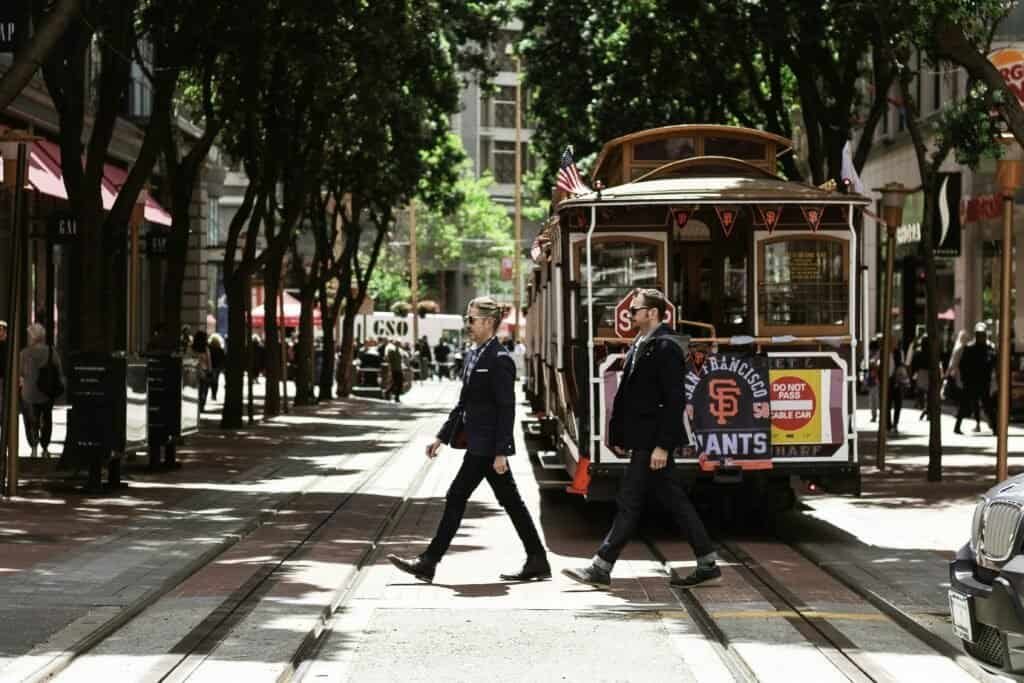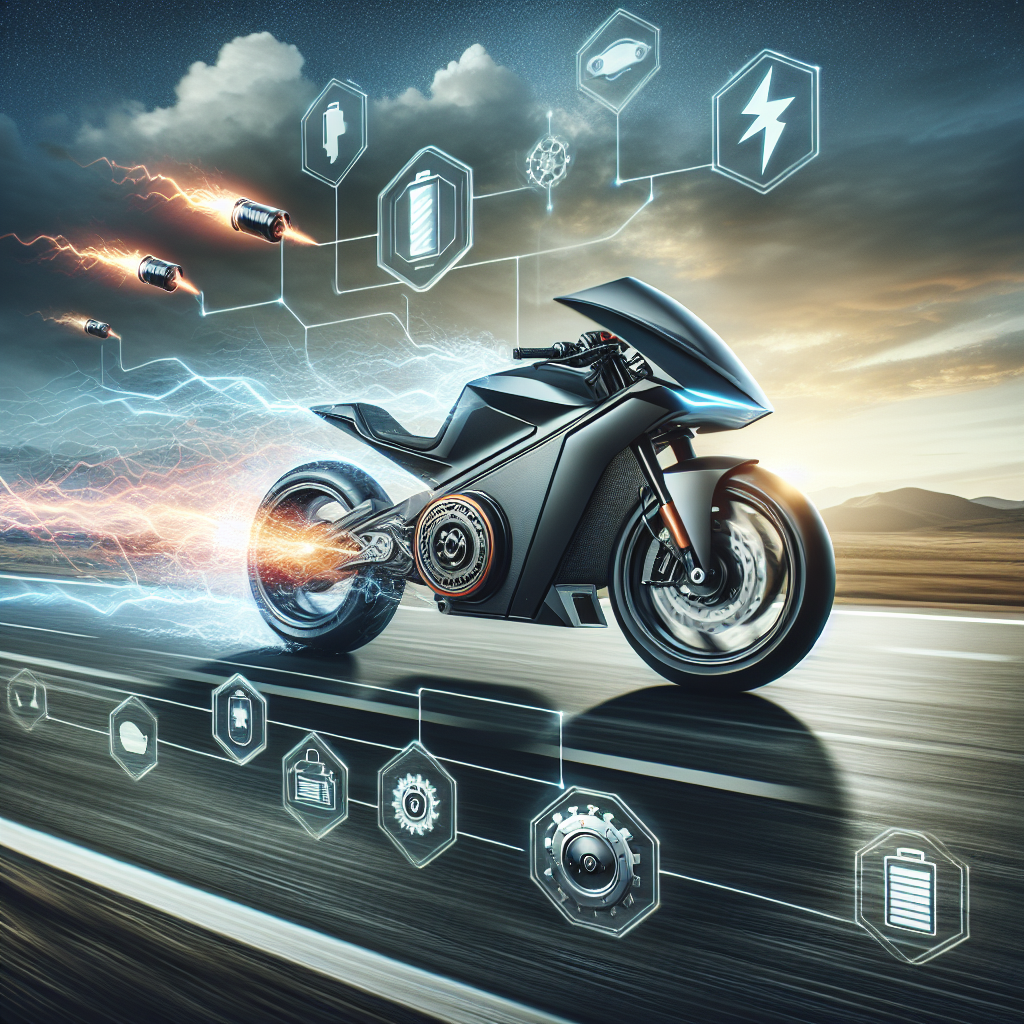Are you curious about the exhilarating speeds electric bikes can reach? Hop on and join us for a thrilling ride as we explore the top speed of most electric bikes. Prepare to be amazed by the effortless speed and power these bikes can provide, revolutionizing the way we commute and explore our surroundings. With their eco-friendly nature and impressive performance, electric bikes are the perfect blend of convenience and adventure. So, fasten your seatbelts (or rather, your helmets) as we embark on this electrifying journey!
Factors Affecting Electric Bike Speed
Motor Power
One of the primary factors affecting the speed of an electric bike is the power of its motor. The higher the motor power, the faster the bike can go. Electric bikes generally come with motors ranging from 250 watts to 750 watts, with some high-performance models even exceeding 1000 watts. The power output of the motor determines how much assistance it provides to the rider, allowing them to maintain higher speeds with less effort.
Battery Capacity
Another crucial factor in determining the speed of an electric bike is its battery capacity. A larger battery capacity means longer riding distances and potentially higher speeds. The battery supplies the necessary energy to the motor, so a higher capacity allows for more power output and greater speed. It’s important to note that sustained high speeds may drain the battery faster, so riders should consider their desired speed range when selecting a bike with an appropriate battery capacity.
Bike Weight
The weight of the electric bike itself significantly impacts its speed. Generally, lighter bikes tend to be faster since they require less effort to accelerate and maintain momentum. Electric bikes can vary in weight depending on factors like frame material, motor size, and battery capacity. If speed is a priority for you, consider opting for a lightweight electric bike to enjoy a swifter riding experience.
Terrain and Weather Conditions
The terrain and weather conditions also play a role in determining the speed of an electric bike. Uphill or off-road terrains may slow down the bike due to increased resistance, while flat surfaces and smooth roads allow for faster speeds. Additionally, strong headwinds or adverse weather conditions like rain or snow can affect the bike’s speed, as the rider may need to reduce speed for safety reasons. Keeping these factors in mind when riding can help manage expectations and make adjustments accordingly.
Rider’s Weight and Pedaling Power
The weight of the rider and their pedaling power contribute to the overall speed of an electric bike. A heavier rider may require more power from the motor to achieve the same speed as a lighter rider. Additionally, the rider’s effort in pedaling can enhance the bike’s speed. Pedal-assisted electric bikes, for example, provide a boost to the rider’s pedaling power, enabling higher speeds when compared to throttle-controlled electric bikes. It’s worth considering how your weight and pedaling ability may impact the bike’s speed when choosing an electric bike.
Maximum Legal Speed Limit
Pedal-Assisted Electric Bikes
Pedal-assisted electric bikes, commonly known as Class 1 electric bikes, are limited to a maximum assisted speed of 20 miles per hour (32 kilometers per hour) in the United States. These bikes require the rider to pedal in order for the motor to provide assistance. Class 1 electric bikes are popular among commuters and fitness enthusiasts, offering a healthy balance between speed and exercise.
Throttle-Controlled Electric Bikes
Throttle-controlled electric bikes, classified as Class 2 electric bikes, have a maximum speed limit of 20 miles per hour (32 kilometers per hour) as well. Unlike pedal-assisted electric bikes, these bikes can be propelled solely by the motor, without the need for pedaling. Class 2 electric bikes are often favored by riders who may have mobility restrictions or simply prefer a more effortless riding experience.

Speed Ranges of Different Types of Electric Bikes
Class 1 Electric Bikes
Class 1 electric bikes, limited to 20 miles per hour (32 kilometers per hour), are designed to provide pedal-assisted assistance to the rider’s pedaling power. These bikes are well-suited for commuting and recreational purposes, offering a perfect combination of speed and exercise. Class 1 electric bikes are ideal for individuals looking to enjoy a dynamic and efficient ride without exceeding legal speed limits.
Class 2 Electric Bikes
Class 2 electric bikes, with the same maximum speed of 20 miles per hour (32 kilometers per hour), are equipped with a throttle-controlled system. This means the rider can rely solely on the motor for propulsion without any pedaling effort. Class 2 electric bikes are an excellent choice for those seeking a more leisurely and effortless ride, particularly individuals with limited physical capabilities.
Class 3 Electric Bikes
Class 3 electric bikes, also known as speed pedelecs, have a higher maximum speed compared to Class 1 and Class 2 electric bikes. These bikes can reach assisted speeds of up to 28 miles per hour (45 kilometers per hour). However, to maintain this higher speed, the rider must continue to pedal actively. Class 3 electric bikes cater to riders who desire a faster and more exhilarating riding experience, making them ideal for longer commutes or sporty rides.
Speed Limitations by Country or State Regulations
Europe
In Europe, the speed limitations for electric bikes vary from country to country. The most common maximum assisted speed limit across the European Union is 15.5 miles per hour (25 kilometers per hour). However, some countries, like the Netherlands and Belgium, have raised the limit to 18.6 miles per hour (30 kilometers per hour) for certain types of electric bikes. It’s essential to familiarize yourself with the specific regulations governing electric bike speeds in the country you reside or intend to ride in.
United States
In the United States, the maximum assisted speed limit for electric bikes is 20 miles per hour (32 kilometers per hour) for both pedal-assisted and throttle-controlled models. Electric bikes that go beyond this speed are generally classified as motorcycles and must adhere to different regulations. It’s crucial to follow the legal speed limits to ensure rider safety and compliance with local laws.
Australia
In Australia, electric bikes are classified according to their wattage and speed capabilities. For bikes with a power output of 200 watts or less, there are no specific speed limitations. However, for bikes with a power output exceeding 200 watts, the maximum assisted speed is capped at 25 kilometers per hour (15.5 miles per hour). It’s essential to adhere to these regulations to avoid any legal complications and ensure a safe riding experience.
Canada
Canadian regulations on electric bike speeds are similar to the United States, limiting both pedal-assisted and throttle-controlled electric bikes to a maximum speed of 32 kilometers per hour (20 miles per hour). However, the specific classification and wattage requirements may vary across provinces. It’s recommended to familiarize yourself with the regulations of your specific province to ensure compliance and safety while riding.
Asia
Asian countries may have varying regulations when it comes to electric bike speeds. It’s important to research and understand the specific laws of the country you reside or plan to ride in. Always comply with local regulations to ensure safety and prevent any legal issues that may arise.

Popular Electric Bike Brands and Their Speeds
Brand A
Brand A is well-known for producing electric bikes with impressive speed capabilities. Their flagship model, the Speedster, boasts a top speed of 28 miles per hour (45 kilometers per hour), thanks to its powerful motor and efficient battery system. Riders looking for a thrilling and fast-paced riding experience often turn to Brand A for their electric bike needs.
Brand B
Brand B offers a range of electric bikes suitable for various preferences and needs. Their City Commuter model is a popular choice among urban riders, with a maximum assisted speed of 20 miles per hour (32 kilometers per hour). Brand B focuses on combining speed, style, and comfort, making their electric bikes an attractive option for commuting and leisurely rides.
Brand C
Brand C, renowned for its innovative designs, offers electric bikes with an emphasis on cutting-edge technology and speed. Their Swift model offers a top speed of 25 miles per hour (40 kilometers per hour), making it a compelling choice for riders seeking a balance between performance and style. Brand C’s commitment to delivering high-speed electric bikes has earned them a loyal following among enthusiasts.
Brand D
Brand D specializes in high-performance electric bikes designed with speed and endurance in mind. Their flagship model, the Velocity Pro, can reach impressive assisted speeds of up to 32 miles per hour (51 kilometers per hour). Designed for the adventure-seeking rider, Brand D’s electric bikes offer thrilling speeds while maintaining durability and reliability, making them ideal for off-road or long-distance excursions.
Brand E
Brand E takes pride in crafting electric bikes that provide exceptional speed and versatility. With their Ultrahawk model, riders can enjoy a top speed of 30 miles per hour (48 kilometers per hour) while benefiting from a range of features tailored to enhance the overall riding experience. Brand E’s commitment to performance and quality has solidified their position as a leading brand in the electric bike industry.
Top Speeds of Various Electric Bike Models
Model X
Model X, manufactured by Brand A, stands out with its impressive top speed. Capable of reaching 28 miles per hour (45 kilometers per hour), this electric bike combines power, agility, and style. Whether used for commuting or thrilling recreational rides, Model X offers riders a fast and exhilarating experience, making it a favorite among speed enthusiasts.
Model Y
Brand D’s Model Y offers a stellar top speed of 32 miles per hour (51 kilometers per hour). Designed for those seeking adventure and unmatched speed, this electric bike boasts a powerful motor and advanced components. With its exceptional performance, Model Y is ideal for riders who crave high-speed experiences and a rugged yet reliable ride.
Model Z
Model Z, from Brand C, offers an excellent balance between speed and functionality. With a top speed of 25 miles per hour (40 kilometers per hour), this electric bike provides riders with an exhilarating journey while ensuring comfort and maneuverability. Model Z caters to individuals who value impressive speeds without compromising on style or practicality.
Model P
Model P, produced by Brand E, features a top speed of 30 miles per hour (48 kilometers per hour). This electric bike combines cutting-edge technology and a powerful motor to deliver an enjoyable and fast-paced ride. Model P’s sleek design, along with its impressive speed capabilities, makes it an attractive choice for riders seeking both performance and aesthetics.
Model Q
Brand B’s Model Q offers a comfortable and efficient riding experience with a top speed of 20 miles per hour (32 kilometers per hour). Designed specifically for city commuting, this electric bike prioritizes convenience, agility, and reliability. Model Q is perfect for riders who value a more relaxed and effortless journey while maintaining the option for higher speeds when needed.

Aftermarket Modifications for Higher Speeds
More Powerful Motors
For riders looking to increase the speed of their electric bikes, upgrading to a more powerful motor can be a viable option. Upgrading from a lower-wattage motor to a higher-wattage one can provide greater torque and increased speed capabilities. However, it’s crucial to consider legal restrictions and safety implications when modifying the motor power of an electric bike.
Upgraded Batteries
Installing a higher-capacity battery can enhance the speed and range of an electric bike. Upgraded batteries offer increased energy output, allowing the motor to propel the bike at higher speeds for longer periods. However, it’s important to ensure compatibility with the bike’s electrical system and consult with professionals to avoid any technical issues or potential risks associated with modified batteries.
Weight Reduction
Reducing the overall weight of an electric bike can lead to improvements in speed and performance. By replacing heavier components with lighter alternatives, riders can achieve faster acceleration and higher top speeds. However, it’s essential to prioritize safety and not compromise the structural integrity of the bike during weight reduction modifications.
Aerodynamic Enhancements
Aerodynamic enhancements, such as fairings or streamlined accessories, can improve the speed and efficiency of an electric bike. By reducing wind resistance, riders can achieve higher speeds with the same power output. However, it’s worth noting that extensive aerodynamic modifications may require technical expertise and can impact the bike’s handling characteristics.
Benefits and Risks of Increased Electric Bike Speed
Faster Commuting
One of the significant benefits of increased electric bike speeds is faster commuting. With higher speeds, riders can cover longer distances in a shorter amount of time, reducing overall commute duration. This is particularly advantageous for individuals with time constraints or those looking to optimize their daily routines.
Improved Efficiency
Higher speeds on electric bikes can lead to improved efficiency in terms of energy consumption per unit of distance traveled. With efficient motors and optimized battery systems, riders can conserve energy while maintaining higher speeds. This can result in longer riding ranges and fewer recharging cycles, enhancing overall efficiency and convenience.
Safety Considerations
Although increased speed can offer a thrilling and exhilarating riding experience, it’s crucial to prioritize safety when operating electric bikes. Higher speeds can increase the risk of accidents and collisions, particularly in congested or unpredictable traffic conditions. Riders must practice responsible riding, follow traffic rules, wear appropriate safety gear, and be aware of their surroundings to ensure a safe and enjoyable riding experience.

Comparisons with Other Modes of Transportation
Electric Scooters
When compared to electric scooters, electric bikes generally offer higher speeds. While some electric scooters can reach comparable speeds, many are limited to slower speeds for safety reasons. Electric bikes often provide a more efficient and comfortable riding experience, with additional benefits like pedal-assisted options and longer riding ranges.
Motorcycles
Motorcycles typically offer higher top speeds than electric bikes, as they are designed for speed and performance. However, motorcycles also come with different licensing, registration, and insurance requirements. Electric bikes, on the other hand, offer a more environmentally friendly option while still providing an efficient means of transportation over shorter distances.
Cars
In terms of speed, cars generally have the advantage of higher top speeds compared to electric bikes. However, electric bikes excel in traffic congestion or compact urban areas, allowing riders to maneuver more easily and often reach their destinations faster. Electric bikes also offer cost and environmental advantages, as they require less maintenance, are more affordable, and produce zero emissions during operation.
Public Transport
Electric bikes can offer comparable speeds to public transport, particularly during congested periods or in urban areas with limited transportation options. With electric bikes, riders have the flexibility to choose their routes, avoiding traffic jams and enjoying a more direct and personalized commuting experience. Additionally, the cost-saving benefits of electric bikes compared to public transport make them an attractive option for many riders.
Personal Factors to Determine Preferred Electric Bike Speed
Purpose of Riding
The purpose of riding plays a significant role in determining the preferred speed of an electric bike. Commuters seeking faster travel times may prefer higher speeds, while recreational riders may prioritize a comfortable and leisurely pace. Identifying the primary purpose of riding can guide riders in selecting an electric bike that aligns with their desired speed requirements.
Fitness and Health Goals
For individuals looking to incorporate exercise into their daily routines, choosing an electric bike that offers pedal-assisted speeds may be preferable. Pedal-assisted electric bikes allow riders to leverage their pedaling power while receiving assistance from the motor, providing a balanced exercise and speed experience. Those who prioritize fitness and health goals should consider an electric bike that encourages active pedaling.
Comfort and Ease of Use
Riders seeking a more relaxed and effortless riding experience may opt for electric bikes with lower top speeds. These bikes provide a leisurely pace, allowing riders to enjoy the surroundings and maintain a more comfortable posture. Additionally, bikes with ergonomic designs and adjustable features contribute to overall comfort and ease of use, enhancing the riding experience regardless of the preferred speed.
In conclusion, the speed of an electric bike is influenced by various factors, including motor power, battery capacity, bike weight, terrain, and weather conditions. Different countries and states have their own legal speed limits for electric bikes, categorized into Class 1, Class 2, and Class 3. Popular electric bike brands offer a range of speeds, catering to different preferences and riding styles. Aftermarket modifications, such as upgrading motors or batteries, reducing weight, and implementing aerodynamic enhancements, can enhance the speed capabilities of electric bikes. Benefits of increased speed include faster commutes and improved efficiency, but safety considerations should always be prioritized. Comparisons with other modes of transportation highlight the advantages of electric bikes in terms of cost, convenience, and environmental impact. Personal factors like the purpose of riding, fitness goals, and comfort preferences help determine the preferred electric bike speed. Regardless of the desired speed range, electric bikes offer a versatile and eco-friendly means of transportation for riders of all backgrounds and preferences.


